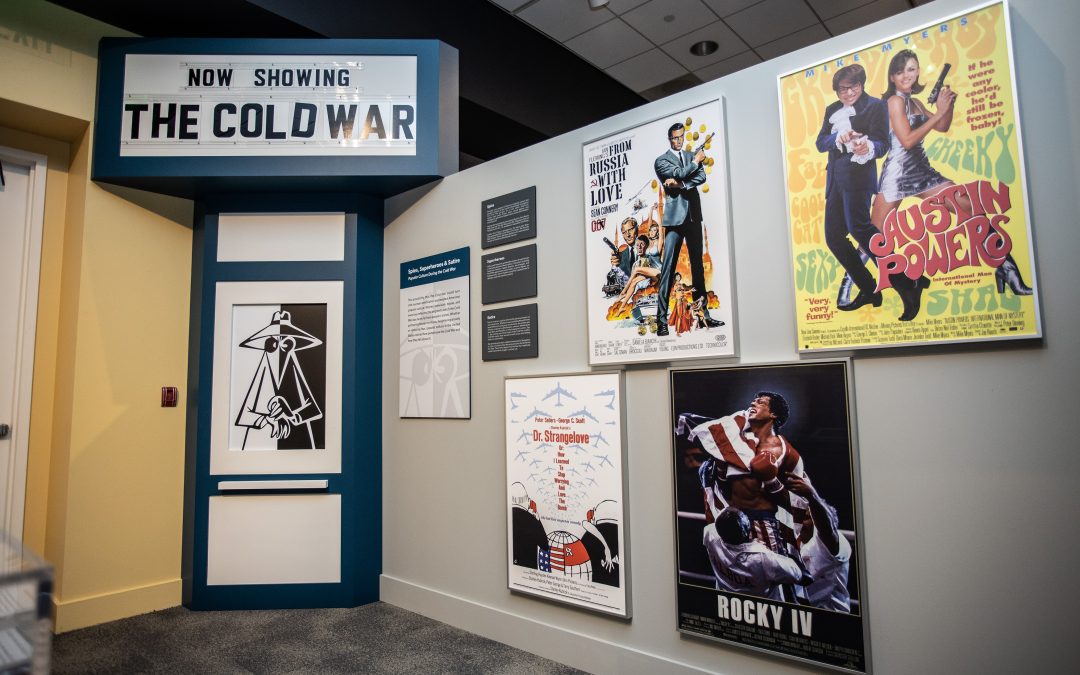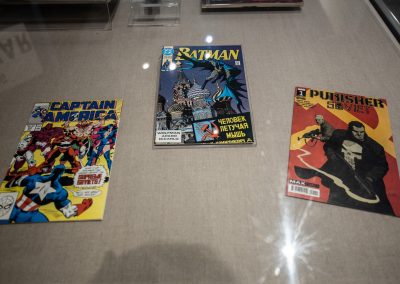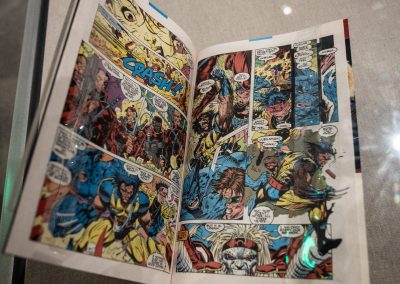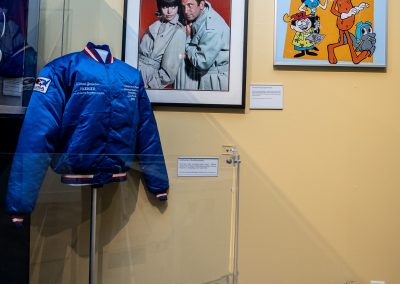The Cold War didn’t just transpire in political speeches and cabinet room meetings⸺ it was felt far beyond the White House and the Kremlin affecting citizens in their everyday lives. Nothing drives this point home more than a look at popular culture during the second half of the twentieth century. Cold War: Soviets, Spies and Secrets gives visitors a nostalgic look at entertainment with movie props for the fictional spy James Bond, DC and Marvel comic books and blockbuster movie posters highlighting many characters established during the Cold War that are easily recognizable today.
The possibility that the Cold War could turn into nuclear annihilation permeated American popular culture movies, television, books and even toys reflected the degree to which the Cold War was never far from people’s minds. Whether portraying heroes or villains, heightening anxiety or reducing fear, popular culture in the United States colored how people saw the Cold War and how they felt about it.
Spies
Virtually every aspect of America’s popular culture fed America’s interest in the world of espionage throughout the Cold War period. At a time when American values were under threat, such popular spies, secret agents, and intelligence operatives as James Bond in From Russia With Love and The Spy Who Loved Me, Napoleon Solo of The Man From U.N.C.L.E., and Mission: Impossible’s Jim Phelps, helped assure viewers that freedom will prevail.
Author Tom Clancy, whose protagonist, the heroic Jack Ryan, outsmarted the Soviet Navy in his book, The Hunt for Red October, became wealthy as his hero became the star of numerous blockbuster movies.
Superheroes
Hollywood frequently enlisted the powers of superheroes in the battle between West and East. Characters including Superman, Batman, Captain America, the Avengers, and the X-Men appeared in comic books, as action figures, trading cards, and in theaters using their superpowers to defeat a cruel and relentless enemy.
Satire
The art of satire is used to diminish the perceived power of one’s adversaries. Whether it was a bumbling Maxwell Smart nevertheless prevailing over an evil enemy, the unlikely pair of Rocky, a squirrel, and Bullwinkle, a moose, defeating the spies Boris and Natasha, or Mad magazine’s comic, Spy vs. Spy poking fun at both sides of the Cold War conflict, Cold War satire often served to both amuse and defang America’s adversaries.
But satire also grew dark, notably in the movies Dr. Strangelove or: How I Learned to Stop Worrying and Love the Bomb and Fail Safe. These films tapped into the fear that ineptitude could inadvertently trigger a nuclear war.
The Virtual Cold War: Video Games
Though the Cold War ended well before the development of sophisticated gaming systems, the dramatic clash between the United States and Soviet Union has captured the attention of a new generation through the immersive world of video games.
Like the scope and scale of the conflict itself, video games set within the Cold War depict scenes of global warfare, anxiety brought about by the fear of nuclear weapons, and nods to the popular imagery that defined the era.
A continuation of the popular Call of Duty franchise, Black Ops Cold War gave players the opportunity to act as clandestine operatives across the globe defending the United States against foreign enemies.
The Fallout series takes gamers to a post-apocalyptic America resembling the 1950s. Imagining a world in which the superpowers couldn’t resist the urge to use nuclear weapons, this game perfectly reflects the anxiety many felt throughout the atomic age.
After the Cold War
Although the Cold War ended in 1991, Hollywood has continued to tap into that period in history for inspiration and entertainment.
The Mission: Impossible television show was revived in 1996 as a series of six movies. Three Austin Powers movies (1997-2002) spoofed the 1960s spy films. The hit television series, The Americans (2013-18) depicted the activities of two undercover Soviet agents in the Washington D.C. area during the 1980s.
All proved popular as viewers could look back with a sense of relief knowing the Cold War ended without ending the world.
Cold War: Soviets, Spies and Secrets is included with admission to the Nixon Library. The Nixon Library is open seven days a week from 10 AM to 5 PM.
Nixon Library admission is $25 for adults, $21 for seniors, $19 for high school and college students, $19 for retired military, active military are free, children 5-11 for $15 and children 4 and under are free.
Nixon Foundation Members enjoy complimentary admission to the exhibit as part of their membership benefits.




